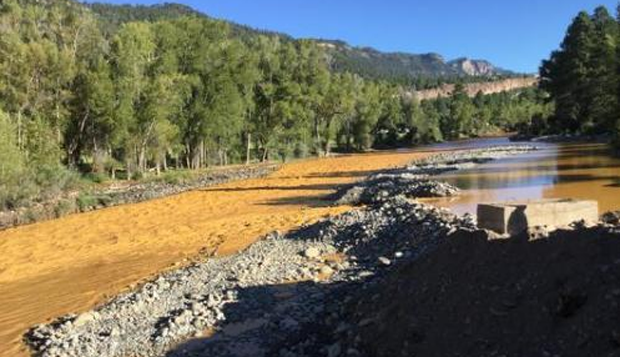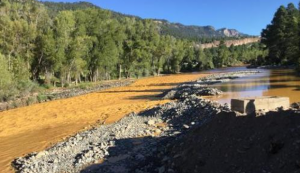Southwest Colorado’s Animas River is closed to the public, and nearby towns have issued state of emergency orders, after a toxic spill from an old gold mine transformed the river into an orange mess of sludge on Aug. 6.
Ironically, the EPA caused the accident while trying to plan for the treatment of the wastewater. According the agency, EPA workers were investigating the closed Gold King Mine when an accident caused the toxic waste to discharge down Cement Creek, which feeds the Animas. The waste had been held behind “unconsolidated debris” near an abandoned mine portal.
Originally, the EPA put spill numbers at 1 million gallons. But as of Aug. 10, they updated to say the massive spill spewed 3 million gallons* of wastewater into the Animas north of Silverton, Colo. By the night of Thursday, Aug. 6, it had flowed to the popular tourist town of Durango. And over the weekend, it crossed the state border into New Mexico.
Interactive before and after view of the #AnimasRiver @EPA triggered #Minewaste – http://t.co/iB4TP56DUl pic.twitter.com/0nervOkVrx
— DurangoHerald (@DurangoHerald) August 7, 2015
#AnimasRiver looks like sea of Sunny D after spill. Contaminated water still pouring in. http://t.co/7NNRiHIOEb pic.twitter.com/zN0JtBWszb
— KKTV 11 News (@kktv11news) August 7, 2015
The mine wastewater contaminated #AnimasRiver as it winds through Durango this a.m. pic.twitter.com/lwySSZ7k1l
— Jonathan P. Thompson (@jonnypeace) August 7, 2015
The full impacts to the nature and wildlife in and around the river are still to play out, but the disaster is a yet another reminder that accidents and human error do occur with extractive industries, despite best-laid plans. Our elected officials and government agencies must take that into account when planning future sites for industries like mining and oil and gas drilling.




